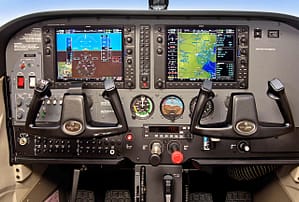 Recently Jet Blue and the Federal Government teamed up to launch a new “airspace highway” where flights are guided by a Global Positioning System. 35 Jet Blue airplanes on the airspace highway will now be guided by a GPS System, instead of using the traditional ground-based radar. Radar is an outdated technology that is less precise than GPS signals transmitted by satellites to ground stations.
Recently Jet Blue and the Federal Government teamed up to launch a new “airspace highway” where flights are guided by a Global Positioning System. 35 Jet Blue airplanes on the airspace highway will now be guided by a GPS System, instead of using the traditional ground-based radar. Radar is an outdated technology that is less precise than GPS signals transmitted by satellites to ground stations.
According to the Washington Post, the federal government just forked over $4.2 million to install new GPS navigation systems on 35 JetBlue airplanes. The FAA is hoping their enhanced performance will entice the airline industry to invest up to $20 billion in the new GPS technology over the next decade. The FAA estimates the NextGen will reduce flight delays by 20 percent, save airlines millions in fuel costs and cut carbon dioxide emissions dramatically. If the investment in JetBlue proves all that, the FAA shouldn’t have a hard time convincing other airlines. Should be interesting to see what happens…
The new GPS tracking system is part of a “Next Generation” flight control system that will help JetBlue improve on-time performance and avoid delays due to traffic jams in the sky. According to the FAA, “NextGen” GPS will allow more planes to fly closer together safely on more direct air routes. FieldLogix, a leading GPS fleet tracking system, says GPS technology is a worthwhile investment with a quick ROI. A GPS enabled fleet tracking system can be used to improve performance and cut costs for many businesses, not just airlines.
According to the FAA, the Next Gen GPS tracking system is expected to deliver an unprecedented level of precision that will:
- relieve air traffic congestion
- allow more direct routing on flights
- reduce flight delays
- promote fuel efficiency
The Next Gen flight GPS tracking system is at the core of the FAA’s goal to improve the way in which commercial air traffic is routed, moving away from ground-based radar to the use of Global Positioning System satellites. A flight GPS tracking system provides better positional information for an aircraft. It’s faster than using traditional radar data to navigate the aircraft route. Using GPS tracking will give more precise location information to tighten up spacing and number of aircraft in the flow.
For more information, please go to the Washington Post.